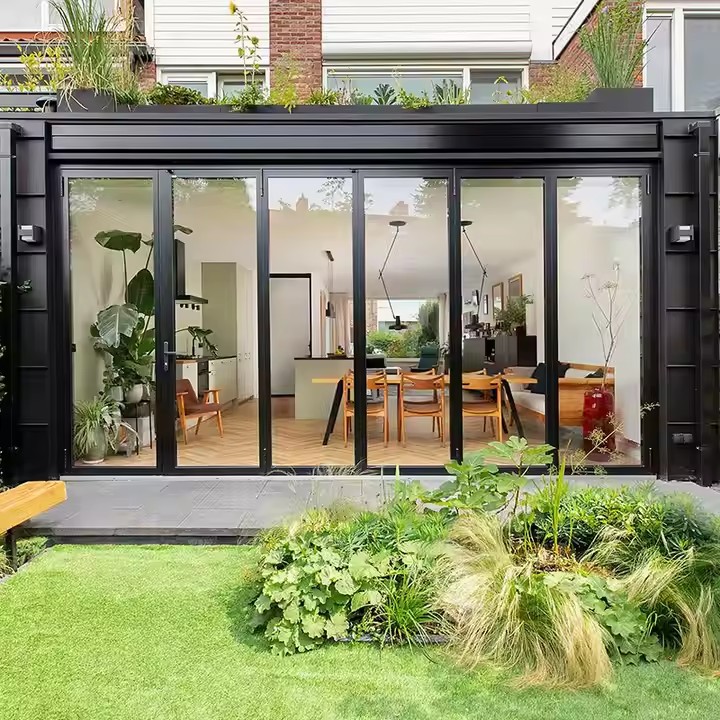Market Segmentation
Segmentation by Building Type: The requirements for windows vary among different building types. For example, residential windows emphasize natural lighting, ventilation, and aesthetic appeal. Windows in office buildings may focus more on sound insulation, heat insulation, and a simple and elegant appearance. Windows in industrial plants prioritize a large lighting area, sturdiness, and the ability to meet ventilation requirements.
Functional Requirements for Residential Buildings
Lighting and Ventilation: Sufficient natural light is needed to create a bright and comfortable living environment. Good ventilation helps keep the indoor air fresh and regulates the indoor temperature and humidity.
Safety Protection: Ensure the safety of residents. For example, install sturdy locks and protective railings to prevent theft and accidents. Especially for families with children, the safety performance of windows is of higher importance.
Sound Insulation: Provide a quiet living space by effectively blocking external noises such as street noise and the sounds from neighbors, thus improving the living comfort.

Stylistic Requirements: There is a wide variety of styles, and the windows should match the overall architectural style of the residence and the interior decoration style. For instance, European-style houses may be more suitable for classical-style doors and windows, while modern and minimalist-style houses tend to prefer simple and smooth window designs.
Performance Requirements: Good thermal insulation performance is necessary to reduce energy consumption, lower the cost of using air conditioners and heaters, and adapt to the climate changes in different seasons.
Segmentation by Geographical Location: The climate conditions, architectural styles, and cultural characteristics vary in different regions. In cold regions, windows need to have excellent thermal insulation performance, such as using double or triple-glazed glass and broken bridge aluminum materials. In hot regions, heat insulation and sunshading functions are more crucial. You can choose glass with low-emissivity coating or install sunshade blinds. Windows in coastal areas also need to have strong corrosion resistance to withstand the erosion of sea winds.
Segmentation by Consumption Level: High-income groups may pay more attention to the brand, quality, design sense, and high-end configurations of windows, such as intelligent window systems and imported hardware accessories, and they are willing to pay a higher price for high-quality products. Middle-income groups focus on cost-effectiveness. They hope that windows have good performance and an aesthetic appearance while being sensitive to prices. Low-income groups may place more emphasis on the basic functions of windows and affordable prices.
Accurately Grasp the Needs of the Target Audience

Conduct Market Research: Through methods such as questionnaires, interviews, and focus groups, gain an in-depth understanding of the target audience’s needs, preferences, pain points, and purchasing behaviors and decision-making factors regarding windows. For example, families with children may be more concerned about the safety of windows, such as the presence of protective railings and safety locks. Consumers who pursue a high-quality life may have higher requirements for the sealing performance and sound insulation effect of windows. Conduct research on the market population. For example, identify which groups have a rigid demand for doors and windows. People building commercial housing are the target group, and those in villa areas also have precise demands for doors and windows.
Analyze Competitors: Study the product features, market positioning, price strategies, and customer reviews of competitors, identify their strengths and weaknesses, and thus clarify your own differential competitive advantages to better meet the unmet needs of the target audience. For example, if the windows of competitors have a more traditional appearance design, you can highlight the fashionable and novel features in your product design to attract consumers who pursue individuality.

Pay Attention to Industry Trends: With the development of technology and the improvement of people’s living standards, the window industry is also constantly evolving. For example, with the rise of smart homes, smart windows have gradually attracted attention. Windows with functions such as automatic dimming, ventilation, and anti-theft will better meet the needs of consumers who pursue a convenient life. Paying attention to industry trends and adjusting product strategies in a timely manner helps to better target the precise audience.
Shape Product Value and Spread Precisely
Highlight Product Advantages: Based on the needs of the target audience, define the core selling points of the product and conduct key dissemination through channels such as product brochures, websites, and advertisements. For example, for consumers who focus on environmental protection, emphasize the use of environmentally friendly materials, energy-saving performance, and the improvement of the indoor environment by the windows. For consumers who care about aesthetics, showcase the diverse styles, colors, and exquisite craftsmanship of the windows.
Provide Customized Services: Meet the personalized needs of different target audiences by providing customized services. For example, customize the color, shape, and opening method of the windows according to the customer’s house decoration style. Provide personalized solutions for customers with special building structures or specific needs, such as curved windows and large floor-to-ceiling windows.
Select Appropriate Marketing Channels: Choose suitable marketing channels according to the characteristics of the target audience. For high-end customers, you can participate in high-end home exhibitions, place advertisements in professional home magazines, and cooperate with well-known designers and decoration companies. For ordinary consumers, you can promote through online home platforms, offline building materials market promotion activities, and community advertisements. At the same time, use social media and short video platforms to display and promote products to attract young consumer groups.

